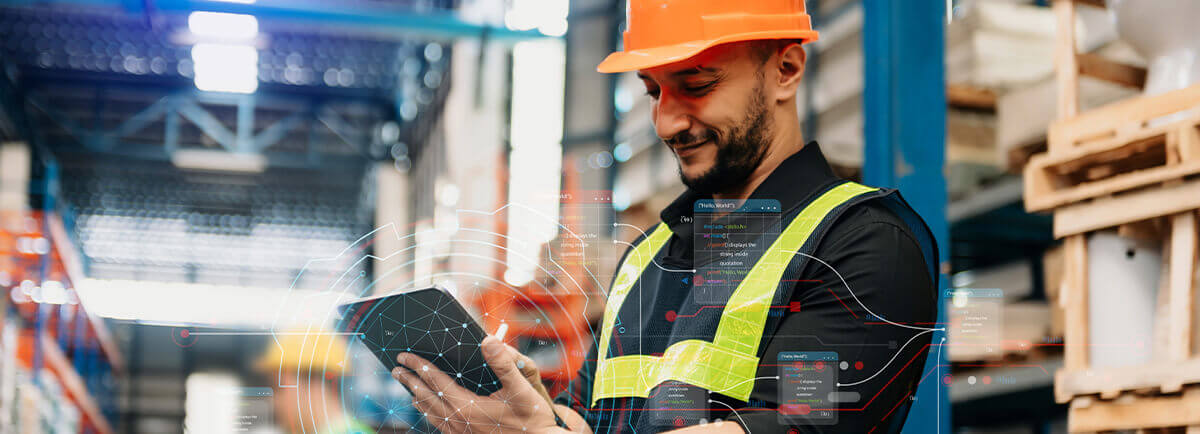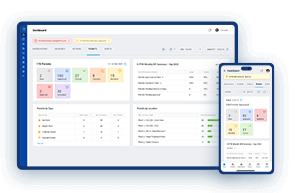
The Role of Digital Permits in Sustainable Safety
Sustainability is no longer a trend but a core priority for businesses. Even safety processes like Permit to Work systems are evolving to support this goal. Shifting from paper-based to digital permits reduces waste, emissions, and improves efficiency.
In this blog post, we’ll explore the environmental impact of paper-based permits, how digital systems promote sustainability, and the business benefits of going paperless. We’ll also look at real-world examples and future trends shaping eco-friendly safety practices.
The Environmental Impact of Paper-Based Permits
Paper-based permits leave a larger environmental footprint than you might expect. Each permit requires printing, often multiple times, consuming large amounts of paper and ink. Over time, this creates significant waste.

Managing these permits also takes up space, with filing cabinets storing physical records. This storage requires not only space but energy to maintain, contributing to operational costs. Frequent printing also increases a company’s carbon footprint, especially when ink and toner are used excessively.
Manual permit processes add inefficiencies. Approvals may be delayed due to physical paperwork not being available at the right time, which slows down operations and wastes energy.
How Digital PTW Systems Drive Sustainability
Digital PTW systems eliminate the need for paper, making operations more sustainable. With Safetymint’s Permit to Work software, approvals are handled electronically using digital signatures. This removes the need for printing and speeds up workflows.

Mobile access allows supervisors to approve permits from anywhere. This reduces the need for travel between sites and lowers emissions. Safetymint also offers cloud-based storage, eliminating physical filing systems and the clutter they create.
The use of QR codes adds another layer of efficiency. Workers and managers can access permits instantly without the need for printed copies. These small changes add up, resulting in a cleaner, more sustainable process.
Cutting Carbon Footprints with Efficient Workflows
Efficient workflows are essential for reducing a company’s carbon footprint. Remote approvals allow supervisors to manage permits without traveling, cutting transportation emissions. This is especially useful for large sites or remote locations.
Automated alerts and notifications keep the permit process on track. Fewer in-person meetings mean reduced energy usage. Customized workflows ensure that permits move through approvals quickly, reducing delays and energy consumption.
Each step in a digital PTW system is designed to save time. Faster processes translate to lower emissions, as work continues smoothly without unnecessary interruptions.
Sustainable Safety in the Real World
Consider a construction site that handles multiple permits daily. Workers submit permit requests through the Safetymint mobile app. Supervisors review and approve these requests remotely, without traveling to the site.
Contractors manage their compliance documents online, uploading licenses and agreements directly into the system. Permits are updated in real-time, making them instantly accessible through QR codes. This process saves paper, cuts down on travel, and keeps projects moving without delays.
The benefits extend beyond operations. Clients increasingly expect companies to adopt sustainable practices. Using a digital PTW system aligns with these expectations, strengthening business relationships.
The Business Benefits of Going Digital
The shift to digital permits offers clear business advantages. Printing and storage costs drop significantly. Remote approvals also reduce transportation expenses, especially for teams managing multiple sites.

Streamlined workflows increase productivity by reducing downtime. Faster approvals mean tasks are completed on schedule, with fewer delays. The company’s reputation also benefits from sustainability initiatives, attracting eco-conscious clients and partners.
Meeting environmental regulations becomes easier with digital systems in place. Companies that demonstrate sustainability are better positioned to lead in their industries, setting an example for others to follow.
Aligning Digital Permits with the Circular Economy
Digital permits do more than reduce waste—they contribute to smarter operations. The data collected helps identify patterns and risks. This allows businesses to refine safety processes and prevent incidents.
A continuous feedback loop ensures ongoing improvements. Digital platforms align with the principles of the circular economy by optimizing resource use. Safetymint’s data export tools make it easy to analyze trends, identify bottlenecks, and fine-tune operations.
These insights lead to safer workplaces and sustainable practices. By making processes more efficient, businesses not only reduce their carbon footprint but also enhance operational performance.
Challenges in Transitioning—and Solutions
Transitioning from paper to digital systems can feel challenging. Some teams may resist change, preferring familiar paper processes. Others may find learning new tools difficult at first.
Safetymint’s platform minimizes these challenges with an intuitive design and a minimal learning curve. Free permit templates make it easy to get started. Customizable workflows allow teams to tailor the system to their specific needs.
Training sessions and pilot programs can further ease the transition. A gradual rollout helps employees adjust to the new system, ensuring a smooth shift from paper to digital workflows.
The Future of Permits: Toward Net-Zero Operations

Digital permits will play a key role in the future of sustainable operations. As companies adopt IoT and automation technologies, real-time monitoring will become standard. This will further enhance safety and efficiency.
Connected systems will reduce the need for manual oversight, lowering emissions even further. Platforms like Safetymint will help organizations integrate safety management with sustainability goals.
The ultimate goal is net-zero operations. Digital PTW systems provide a practical step toward achieving this vision, aligning safety protocols with environmental responsibility.
Ready to improve safety and embrace sustainability? Request for a free trial or schedule a demo of Safetymint’s Permit to Work software today and see how easy it is to go paperless.

Ramesh Nair is the Founder and Principal Partner of Niyati Technologies, the company behind Safetymint.
He’s a dedicated advocate for workplace safety. Ramesh firmly believes that every individual deserves to return home safely after a day’s work. Safetymint, the innovative safety management software, emerged from this conviction. It’s a platform designed to streamline safety management, empower safety professionals, and enhance safety in workplaces.
Through his blog, Ramesh shares insights, best practices, and innovative solutions for workplace safety. Visit his social media profiles to follow him for regular updates.




